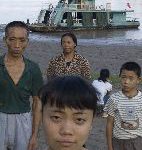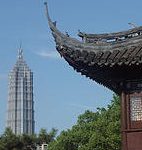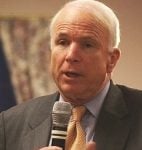The Canadian photographer Edward Burtynsky, whose large, majestic prints focus on human construction and industrial landscapes, says he aims “not to glorify industry, nor to damn it.” But when he turned his lens to China’s rapid industrialisation, what did he find? And how can his striking images help us understand the environmental challenges facing the world’s fastest growing economy? These questions are asked subtly and artfully in Manufactured Landscapes, a documentary film directed by Jennifer Baichwal, which opened in the United Kingdom on May 9.
I meet Baichwal at the British Film Institute in London and start by asking her why she was first attracted to Burtynsky’s vast images of factory production lines, ship-breaking yards and mountains of electronic waste. “When I first saw Burtynsky’s work,” she says, “I was struck by the capacity of the pieces to change environmental consciousness non-didactically.” Baichwal, whose previous films include a portrait of the enigmatic writer Paul Bowles, says she was drawn to the images’ ambiguity and sense of mystery. “They are beautiful to look at, but you’re looking at garbage. The somersaults that your mind goes through when you’re confronting one of these prints – I think it takes you to a different place.”
This complexity stands in sharp contrast to the green politics of an earlier time, she says, politics which were often polarising and out of touch with the ethical imaginations of ordinary city dwellers. “Not everybody’s going to move to the country and become an organic farmer and make their own clothes.” Instead, Manufactured Landscapes suggests another way to begin to think about ecology. Rather than being a documentary with a didactic political message – in the style of Al Gore’s global-warming documentary An Inconvenient Truth – the film’s stately pace allows the viewer to “slow down enough to meditate on your own impact on the environment.”
Baichwal admits that Manufactured Landscapes reaches similar conclusions to Gore’s film, “but through a completely different path that is much more experiential, allowing you to be in the places you are responsible for, but would never see.” The film animates these hidden places in Burtynsky’s work with on-the-ground reportage, the photographer’s own words and a dissonant, industrial soundscape. At its heart is the seeming contradiction between the rapid, noisy process of industrialisation in Asia and the eerie serenity of Burtynsky’s monumental photographs.

Burtynsky was inspired to shoot in China, Baichwal tells me, when he started to wonder where his computer would go to die once he had finished using it. Searching for the answer led him to China’s vast recycling yards for waste electronic equipment, where the United States sends at least half of its “e-waste”, and where substances like lead and cadmium often pose environmental and health risks to workers and local residents. His bold photographs of junked computers and televisions, therefore, aim to make the viewer aware of the consequences of his or her own consumption. “There is no ‘away’ to throw garbage away to,” Baichwal says, quoting the sustainability-focused American architect William McDonough. “The whole film is meant for you to reflect back on yourself. It’s about all of us; it’s not about people in China.”
However, the film is mostly shot in China and its subjects range from workers in the country’s booming manufacturing-for-export sector to construction at the Three Gorges Dam project, from coal mining to urban nightclubs for the country’s new middle classes. As different as these sites may seem, landscape is the film’s organising principle and – as the title suggests – this is exclusively of the man-made variety. During the film, Burtynsky is heard to reflect: “The new landscape of our time is the landscape that we change, that we disrupt in the name of progress.” And Baichwal tells me, too, that she was struck by these places’ unique effect. “Being in some of those landscapes, you literally can do a 360-degree turn and there is nothing natural left in the environment – nothing.”
But in concentrating on the changing landscape of China’s rapid development, does the film single out the country for criticism? “They are doing what every other industrialised country has done: industrialise; make a lot of money; get incredibly dirty; clean up later,” says Baichwal. Many in the country understand the consequences of this growth, she adds, and are working to change the way it is handled. “People in China know the cause, they know what’s going on, but I think there is this constant tension between being outspoken and advocating for change, and not going too far so that you become marginalised.”
“I never wanted anyone to think this was an indictment of China, because it’s not,” she continues. “This is really more about thinking about yourself and your own participation in cycles of consumption.” The film takes you to sites of frenetic transformation and environmental degradation not to excuse your own inaction, but to inspire a personal transformation. “Once you witness a place that you are responsible for but would never normally see, it changes you,” says Baichwal. And this ties you intimately to lives on the other side of the world. “I’m heartened by the fact that most audiences… look at themselves and think about their own intimate relationship to that woman [in China] who spends her life making spray mechanisms for irons.”
It is the strange intimacy of an increasingly globalised world facing a shared, looming crisis that underpins the environmental consciousness of Manufactured Landscapes. “We all have to recognise that there is no ‘far away’ anymore,” says Baichwal.
Manufactured Landscapes is released in the United Kingdom on May 9. For more information and venues, visit www.bfi.org.uk/manufactured
Sam Geall is the deputy editor of chinadialogue





